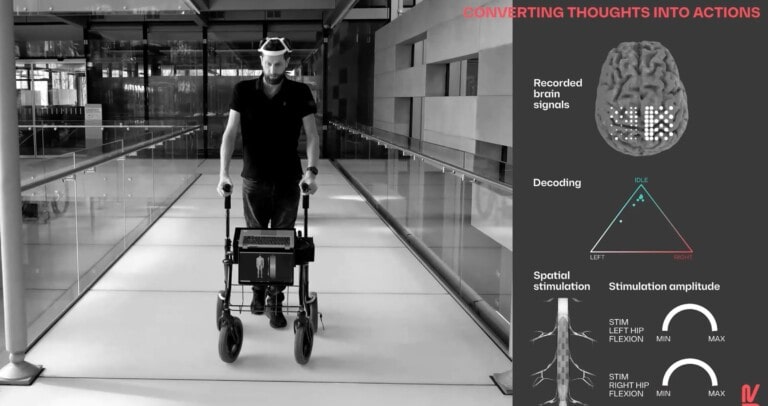In one of my previous posts, I mentioned a neurotech system that helps spinal cord injury patients walk again via an epidural electrical stimulation system implanted in the spinal cord. The researchers in Switzerland also combined the system with a cortical implant system that decodes patients’ motor intentions using electrocorticogram (ECoG) of the somatosensory cortices (Lorach et al., 2023). The ECoG are processed by a portable signal processing unit. The unit extracts spatial, temporal and spectral features from the ECoG to predict motor intentions and adjust epidural stimulation parameters in real time.
The Brain-Spine Interface (BSI) system is an impressive concentration of neurotechnologies. The spinal and cortical implants are equipped with a small, long-life power unit and wireless communication capability with the processing unit. The processing unit is wearable, allowing the patient to use the system outside of the hospital and continue BSI-assisted rehabilitation at home.
The patient in the photo above is Gert-Jan Oskam. The Dutchman was paralyzed after a bicycle accident and was unable to stand up or walk for 10 years. Then, at the age of 38, he took part in the clinical trial of the epidural electrical stimulation system. Through continuous use of the system and and system-assisted rehabilitation, he regained some strength and control in his lower limbs. Progress plateaued after 2 years, but made him eligible for the clinical trial of the BSI system.
Today, Gert-Jan is walking again pushing a cart that carries the processing unit, a laptop computer. He uses the computer to calibrate the system himself. He can decide when and where to use the system. The clinical trial continues outside of the hospital. Every bit of his activity – getting up, walking, climbing stairs – advances the neurotechnology, literally step by step.
Reference: Lorach, H., Galvez, A., Spagnolo, V. et al. (2023). Walking naturally after spinal cord injury using a brain–spine interface. Nature 618, 126–133. https://doi.org/10.1038/s41586-023-06094-5


